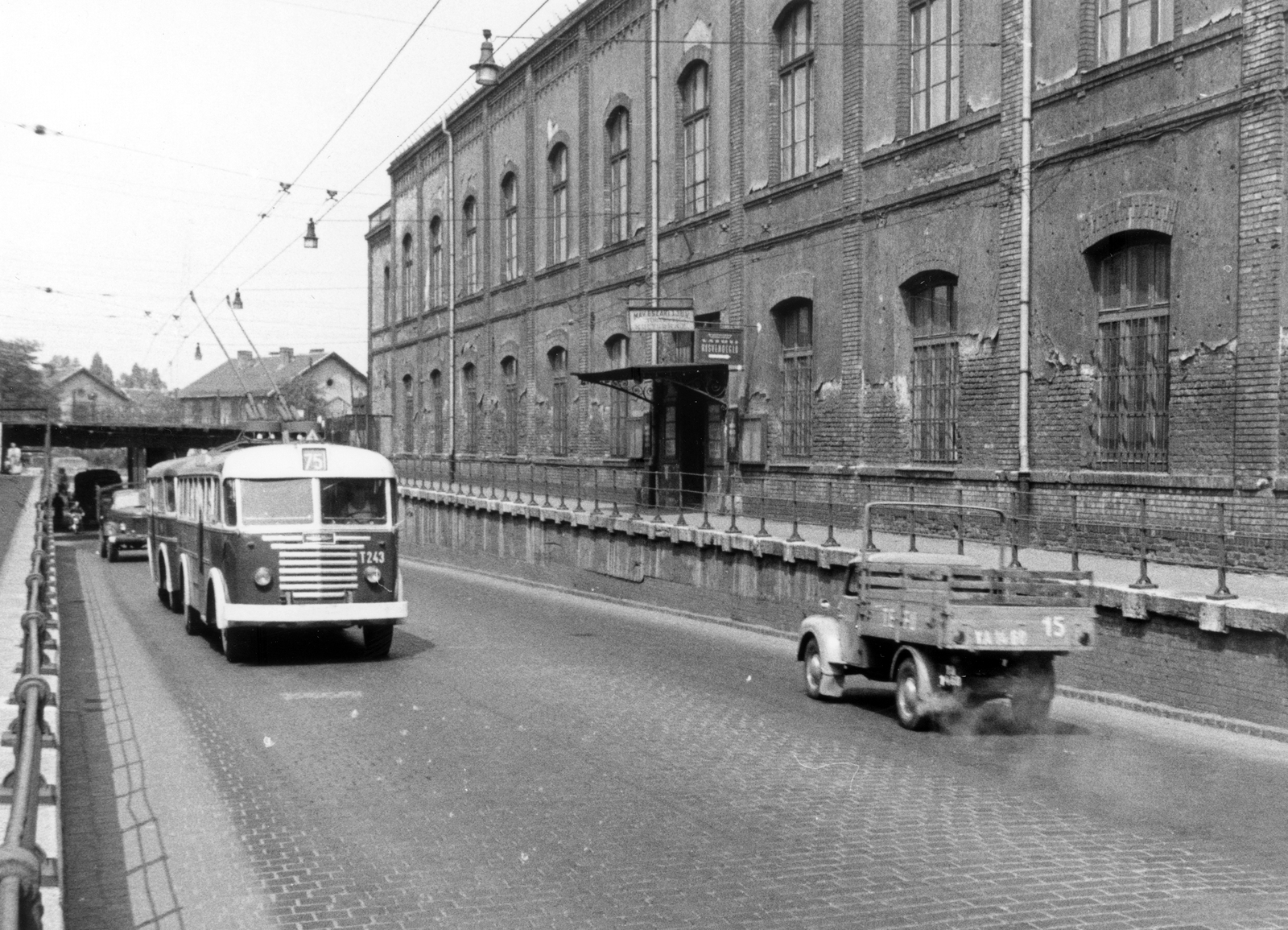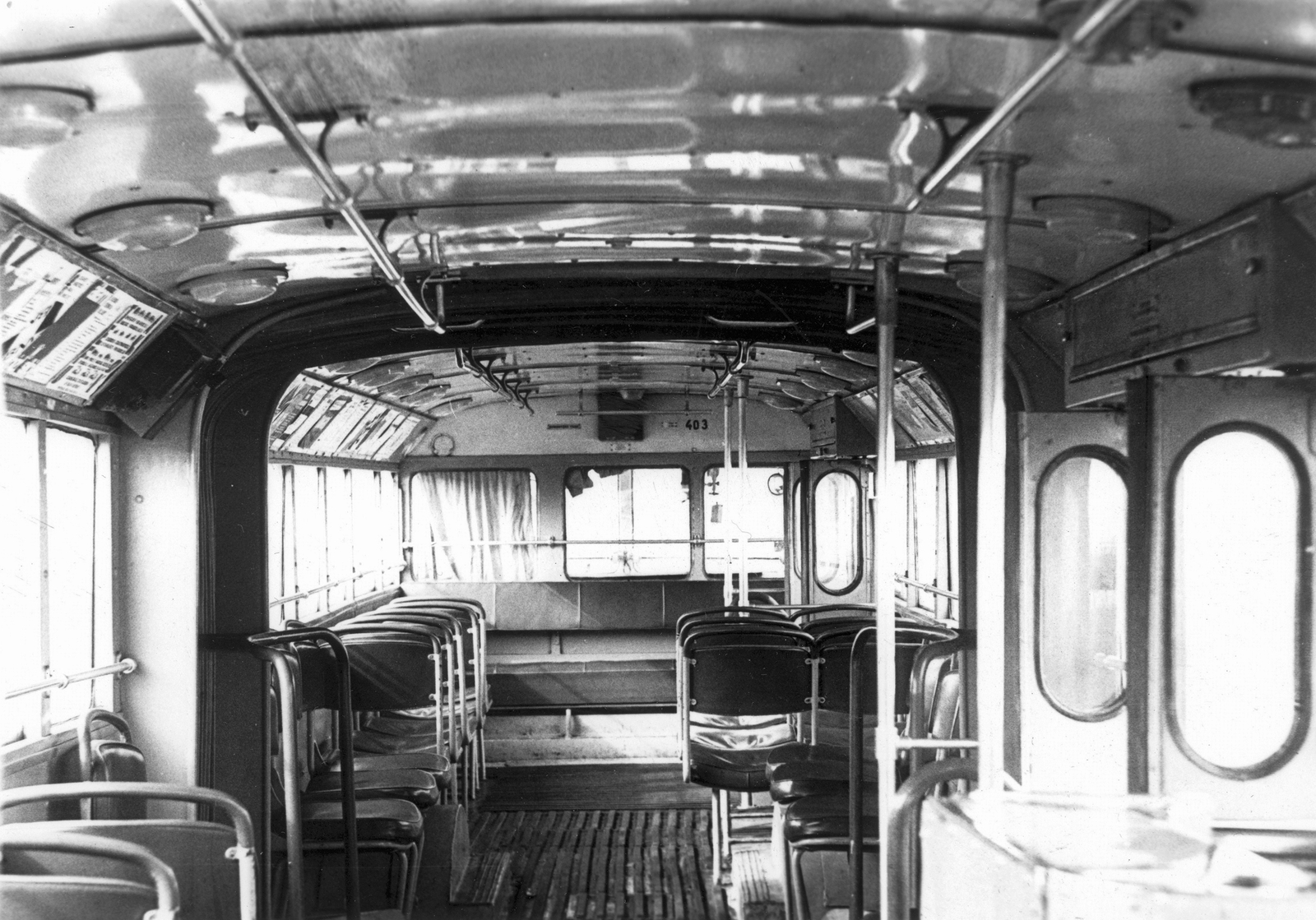Not the Ikarus 60T vehicles, that appeared in 1952, were the first Hungarian trolleys to travel in Budapest, as the trolleys in Óbuda in the 1930s were also Hungarian-made, and one of the vehicles survived the war and was even used when the Pest network was built.
The Óbuda line was not rebuilt after World War II, but in 1949 a new line was established in Pest, which was started on 21 December 1949. As this day was the official 70th birthday of Soviet dictator Joseph Vissarionovich, Stalin, the line - which, of course, was built to date for this “big anniversary” - was given the 70 number. (Actually he wasn't born then, but it didn't bother the comrades at home or in the Soviet Union.)

The sample, the Soviet MTB 82 trolley in 1950 (photo: Fortepan / No.: 126920)
In 1949, the cars on line 70 were Soviet-made, but just over two years later, a Hungarian trolley, a trolley version of an Ikarus 60 bus, appeared on the streets of the capital, even earlier than the bus version, the Ikarus 60 was released. On 7 February 1952, the newspaper Világosság reported in a large article that the Hungarian trolley had been completed.
“After months of experimentation and careful work, a sample of the Hungarian trolleybus was completed at the Ikarus factory. Now it is standing in front of the remise on Damjanich Street, and the beautiful car will not escape the attention of any passer-by. It has a different shape than the Soviet trolleybuses: it has the same bodywork as the upcoming five-tonne Ikarus 60 bus, which is advantageous because it will allow the bus and trolleybus to be produced in parallel. ”

The semi-"naked" test drive in the 7 February 1952 issue of Világosság.
The paper did not keep quiet, and even proudly assumed that there was Soviet technology under the Ikarus body, which they booked as Soviet help. In fact, the Hungarian experts assembled the electrical equipment of the trolley from spare parts sent to the Russian trolleys, which was the same as one of the previously arrived Soviet MTB 82. Actually the reason for the development of the "Hungarian" trolley was that the Soviets could not transport enough vehicles, but the development of the network in Hungary was very active. Since people could not use a private car in the 1950s, urban transport was entirely public transport, which could barely satisfy the demand. There was a great desire to develop the trolley networks, and in 1953 it was even suggested that a trolley be passed through the Chain Bridge, even though the poles could not be placed nicely.

On the Hungária Boulevard with a trailer in 1958 (photo: Fortepan / No.: 24045)
The first vehicle presented at that time was still incomplete, it had no side panels, ie the structure was visible, there were no seats in it, but they were not needed for the test drive, as the functionality was examined here, not what the windows or chairs were like. By the way, the test was successful, the newspaper already quoted wrote about the further fate of the vehicle:
“Now the new trolley around the Gorky Alley will be visible for about two weeks: the test drives will last until then. Many trolleybus drivers will try it and describe their opinions and remarks. After two weeks, the trolley will return to the Ikarus factory with the comments described and will be on the market around the end of March, at the latest on 4th April. Then, of course, there will be side windows, side panels and an inscription: “Ikarus 60. TR. ” - announcing another victory for Hungarian industry. ”
The Soviet-Hungarian trolley was not in traffic on 4 April, the first one was made only by the summer of 1952, followed by 156 in the following years. Although the first vehicles received a completely Soviet engine and electronics, over time Hungarian-made ones were installed in vehicles, the first Ikarus 60T trolley, made entirely in Hungary, was not built until 1953, but this meant that the equipment was manufactured in Hungary according to Soviet plans, thus, the Ikarus 60T trolley was technically completely identical to the Soviet MTB 82.

Interior of an articulated version (photo: Fortepan / No.: 24057)
The successful type was later used with a trailer to reduce congestion, and in the 1960s many were rebuilt into articulated vehicles, meaning that articulated vehicles were not built in advance, but that existing vehicles were supplemented with a articulated section and another trailer made from a scrapped bus.
As we wrote at the beginning of the article, these trolleys were very successful in Budapest, which was also helped by the fact that the already robust Soviet technology was built into a very resilient, strong body, so the vehicles served Budapest public transport for more than 20 years. The Ikarus 6 solo trolleys were in circulation until 1975, and the ones rebuilt to be articulated until 1976. The solo vehicles were then replaced by a Soviet Ziu9 trolley, the articulated ones by an Ikarus 180 trolley.
Cover photo: The Ikarus 60 trolley in 1962 (photo: Fortepan / No.: 24060)



































